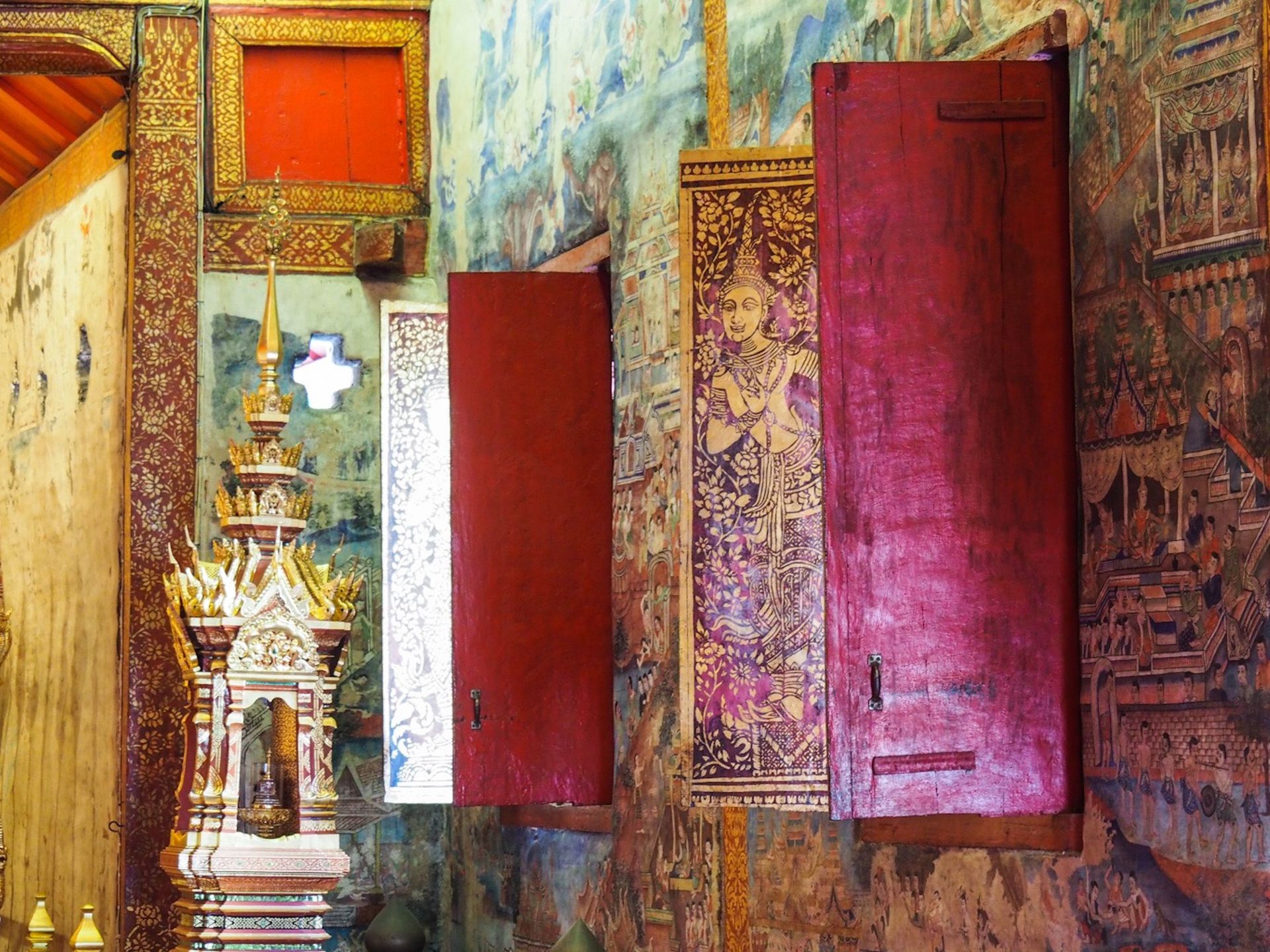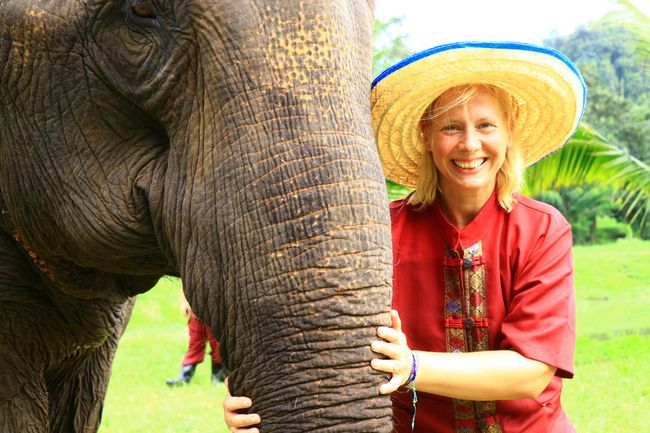Kingdom of Lesotho - The Roof of Africa
شايع ٿيل: 05.09.2018
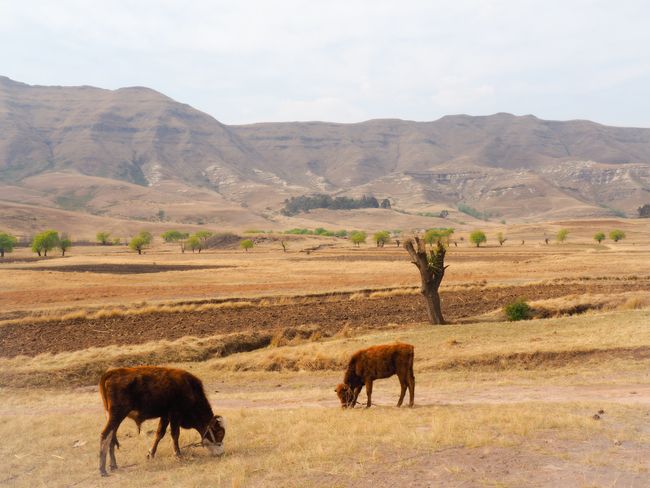
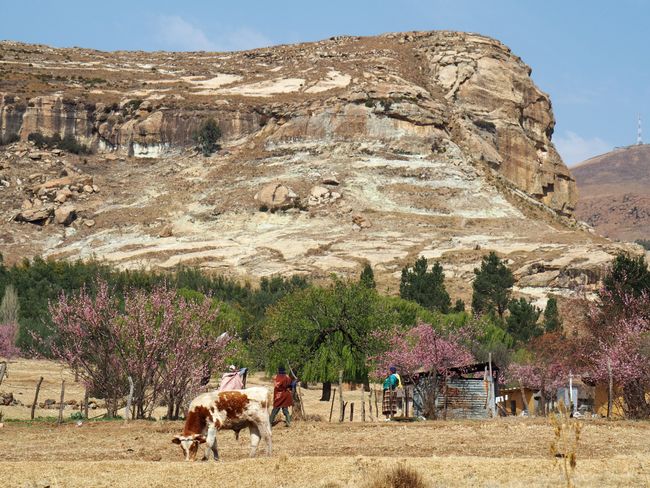
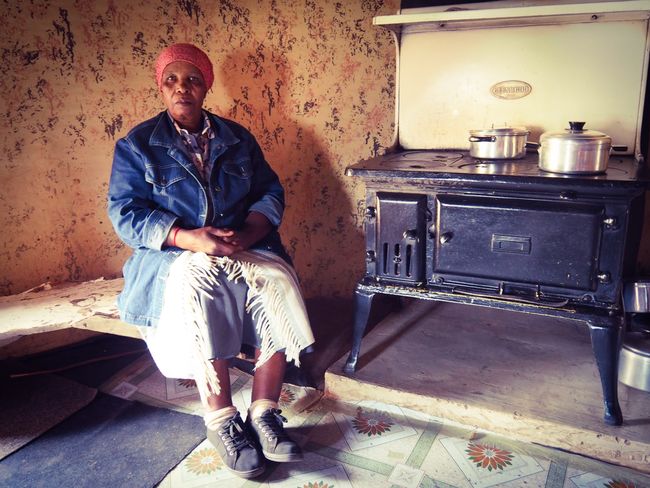
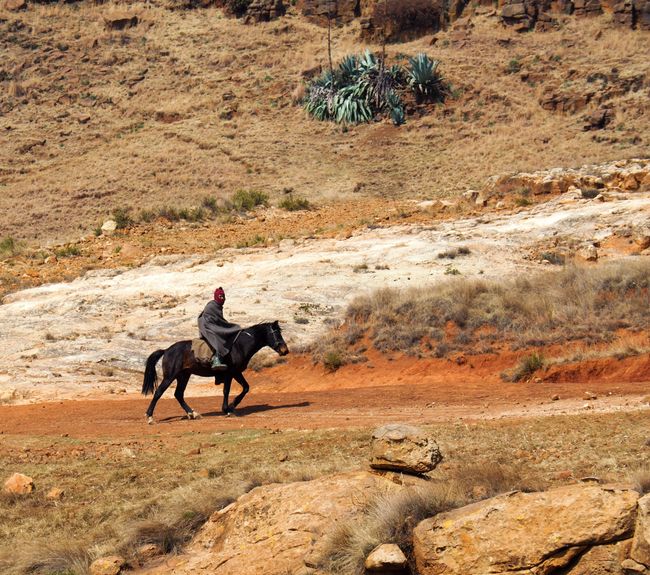
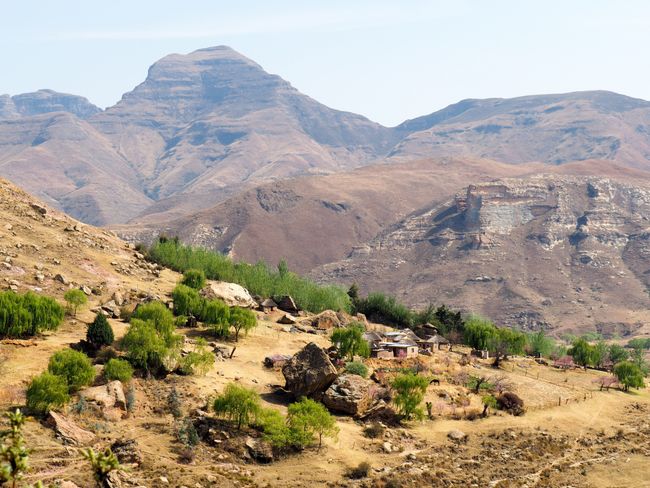
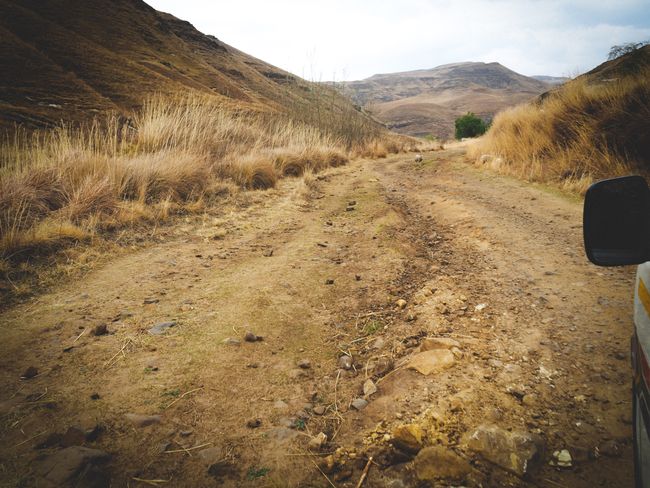
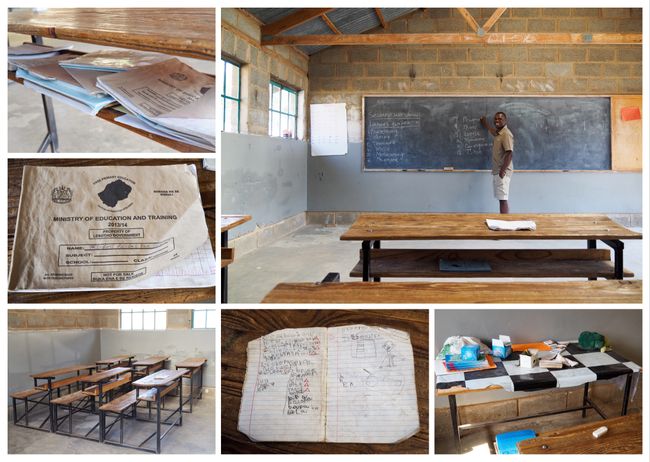
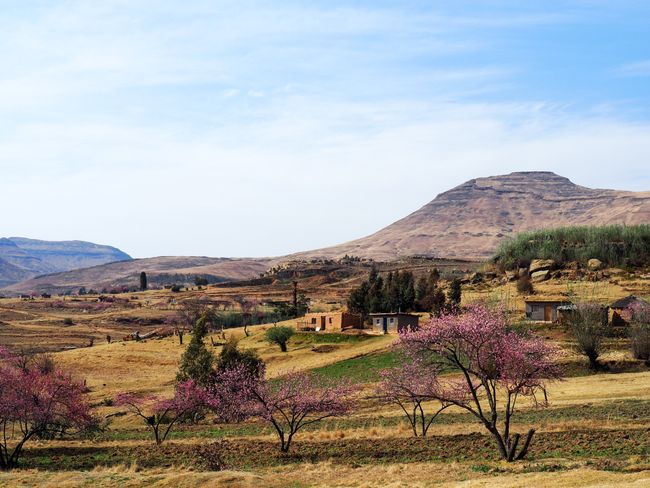
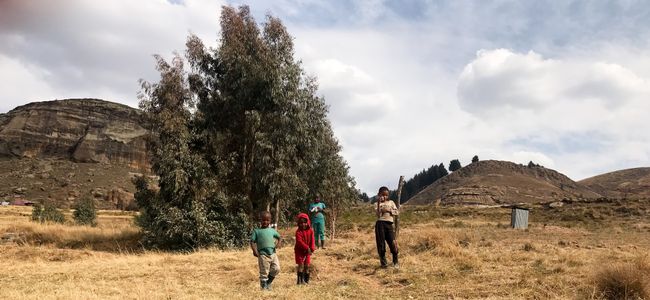
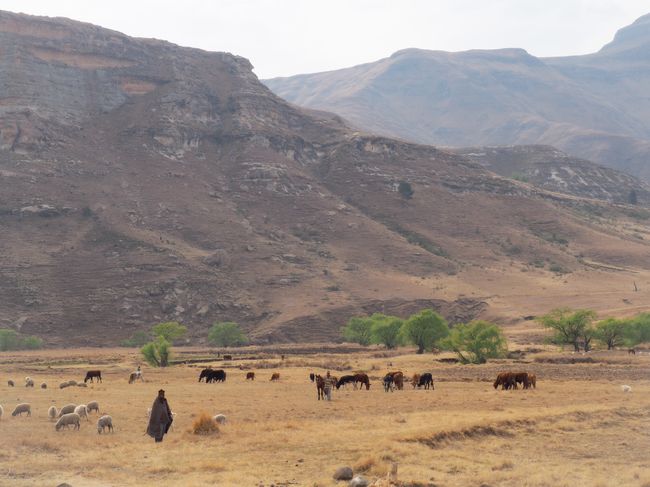
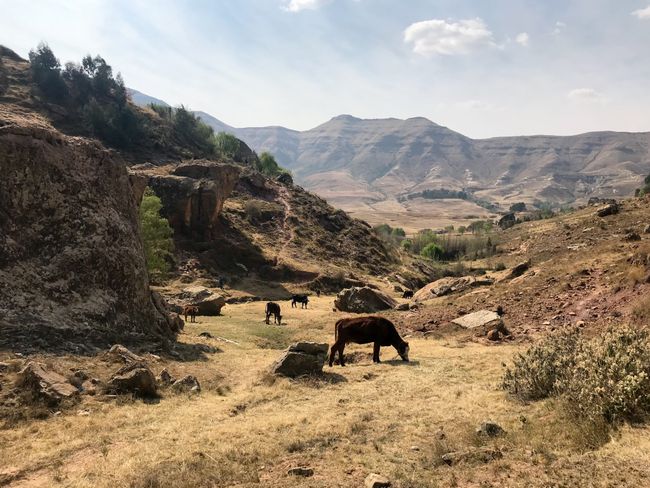
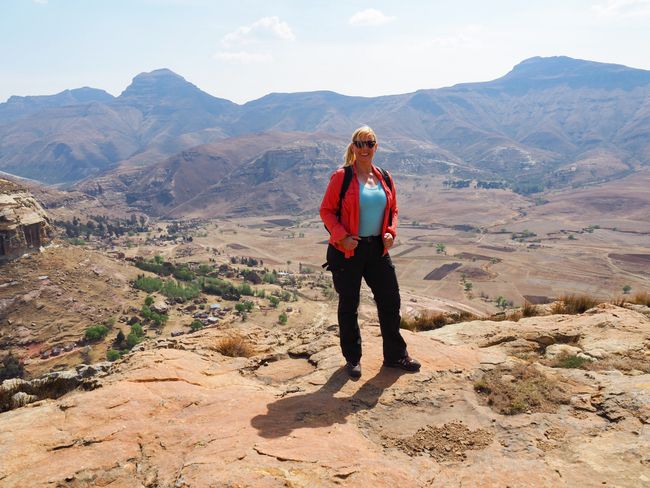
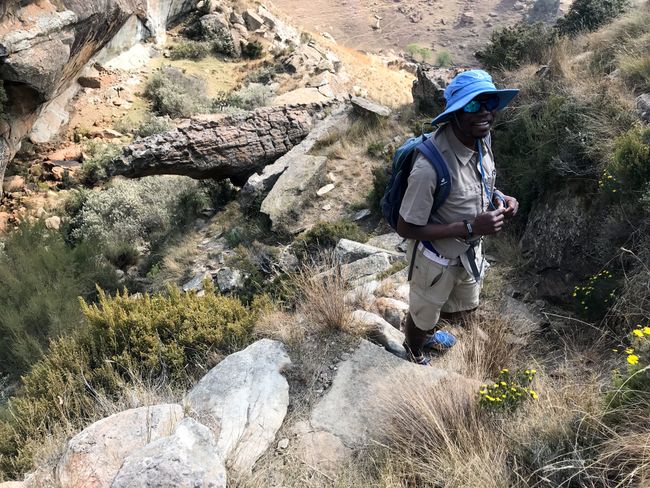
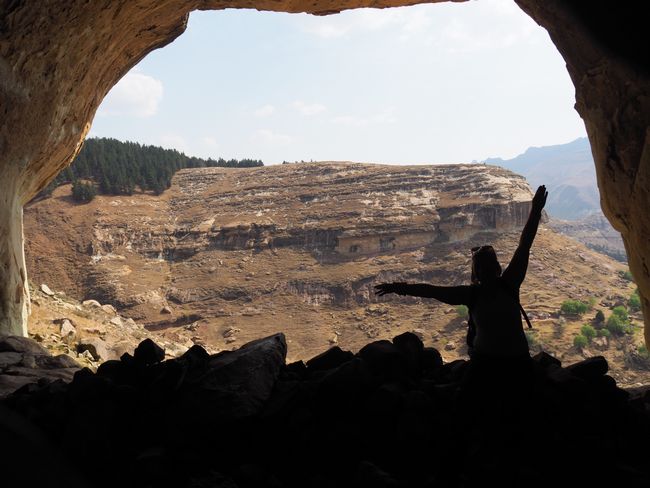
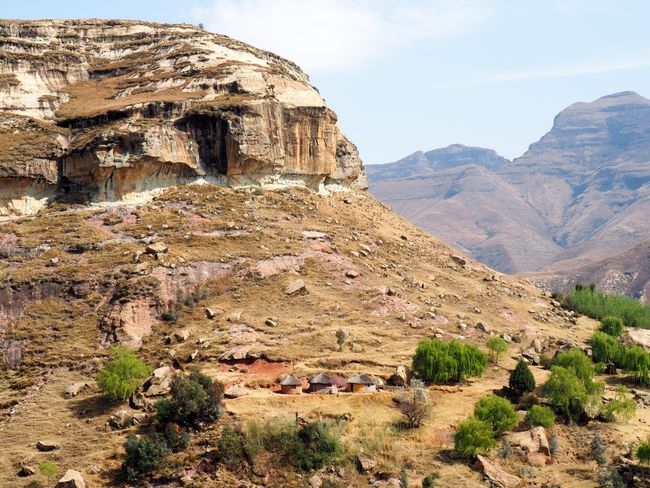
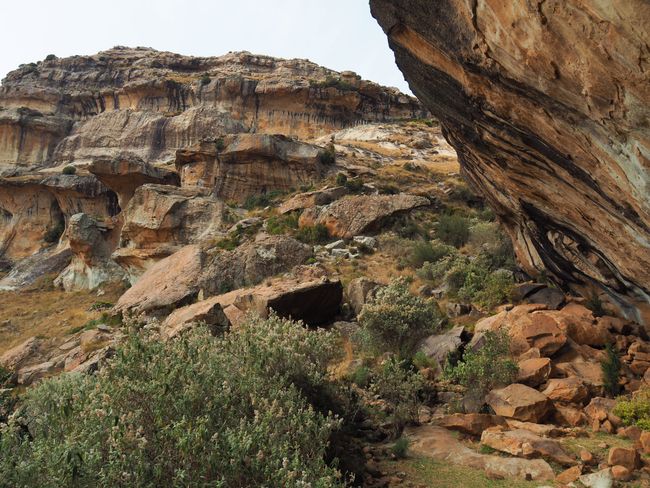
نيوز ليٽر جي رڪنيت حاصل ڪريو
02/09/2018 Our plan for our 2-day stay in the Drakensberg was actually to hike up to the Amphitheatre. 7 hours for experienced and fit hikers plus the corresponding ascent and descent. But when we arrive at our hostel Amphibackpackers, interesting tours are offered to us and we spontaneously decide to join the trip to the neighboring Kingdom of Lesotho tomorrow. When will we ever have the chance to see something like this again? Probably not so soon.
It gets dark here at 5:30 pm and we hurry to set up the tent borrowed from Denja's host brother Thomas. In no time at all, it's dark and our somewhat aged shelter is standing. We cook pasta and complete the menu with salad and dessert. Wash up and onto the air mattress, because we're supposed to start at 7:20 am tomorrow. But we can't really sleep well. It storms so heavily that we wonder if the tent will hold up through the night. Right on time, we start early in the morning. Apart from us, there's only Reka, a veterinary medicine student from Zurich, and Searchmore, our African guide. Very cool. Searchmore provides us with information about the Kingdom of Lesotho during the trip.
Right at the border crossing, we also understand what the travel guide means when he describes that out of the 5,500 km of roads in Lesotho, only 800 km are paved. This is the main road. No joke.
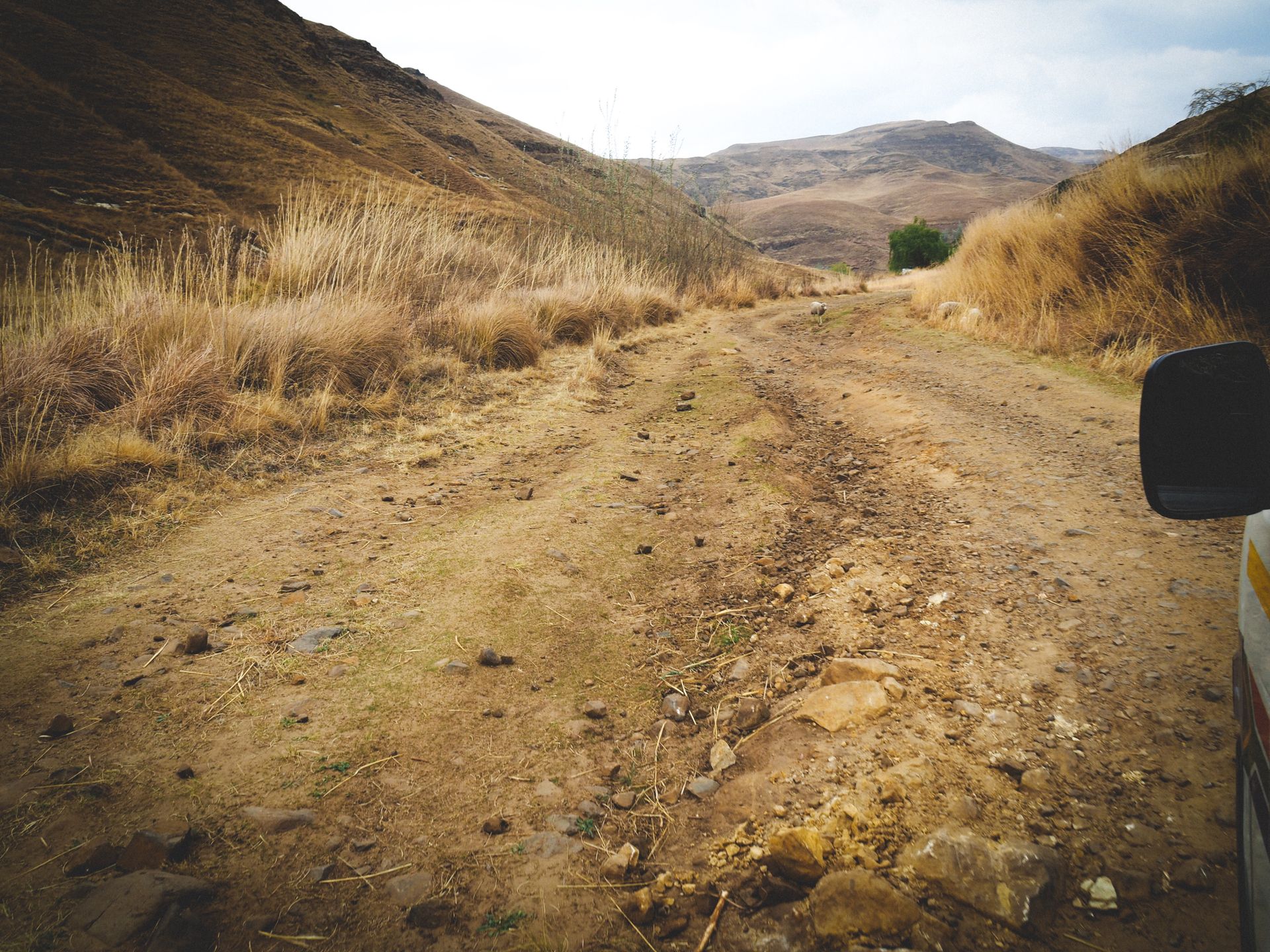
We fly like dolls in the car and are shaken back and forth. Searchmore just laughs and says, "African massage, he?"
The second thing that immediately catches the eye is that Lesotho is a beautiful and terribly poor mountainous country. The nature is breathtaking and the tranquility is captivating. The village residents can be seen wrapped in colorful blankets herding animals, riding steep mountain slopes on horseback, or walking along narrow paths. There is no electricity or water. That has to be fetched from the nearest well, which is several kilometers away. Unbelievable.
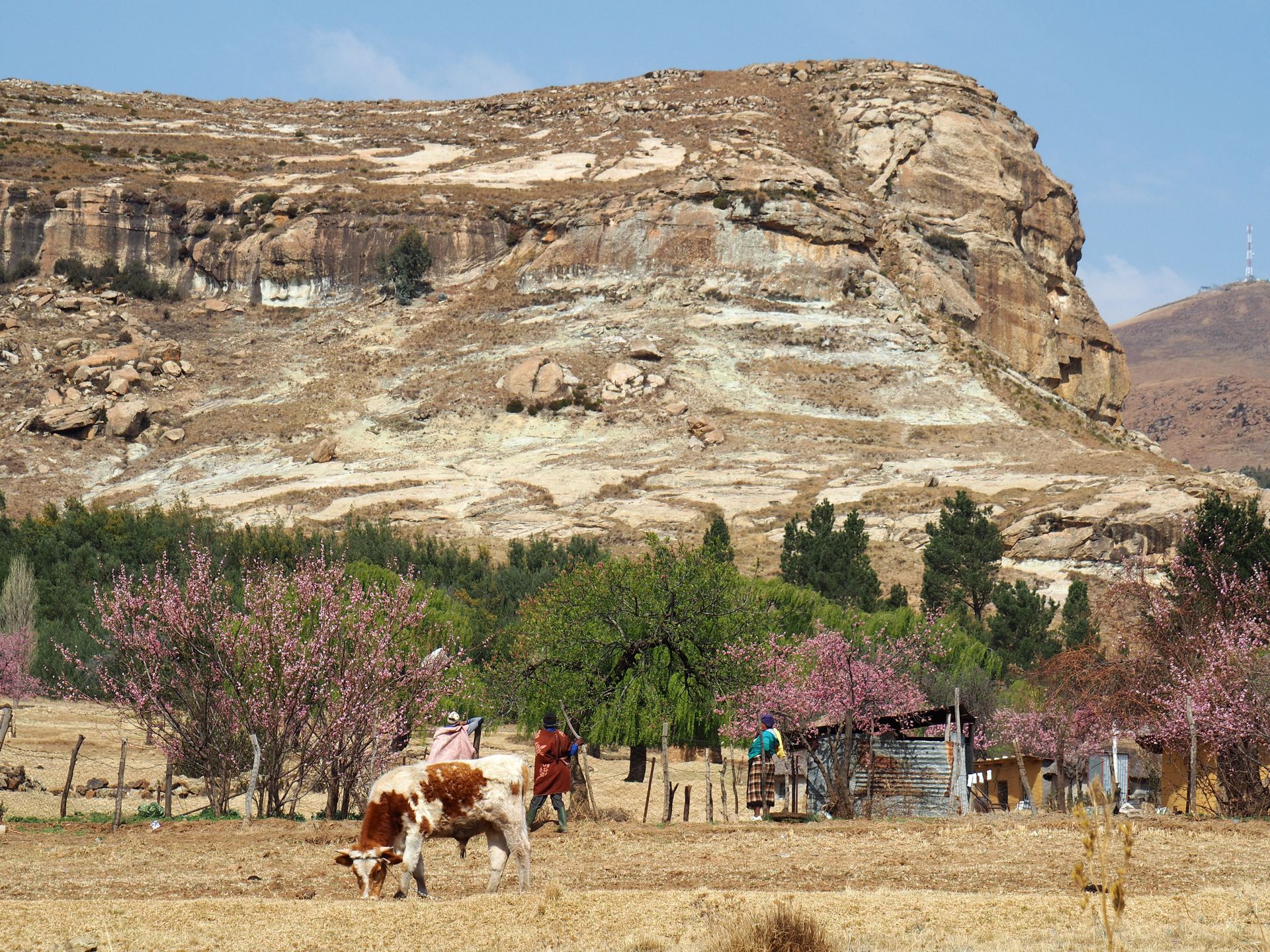
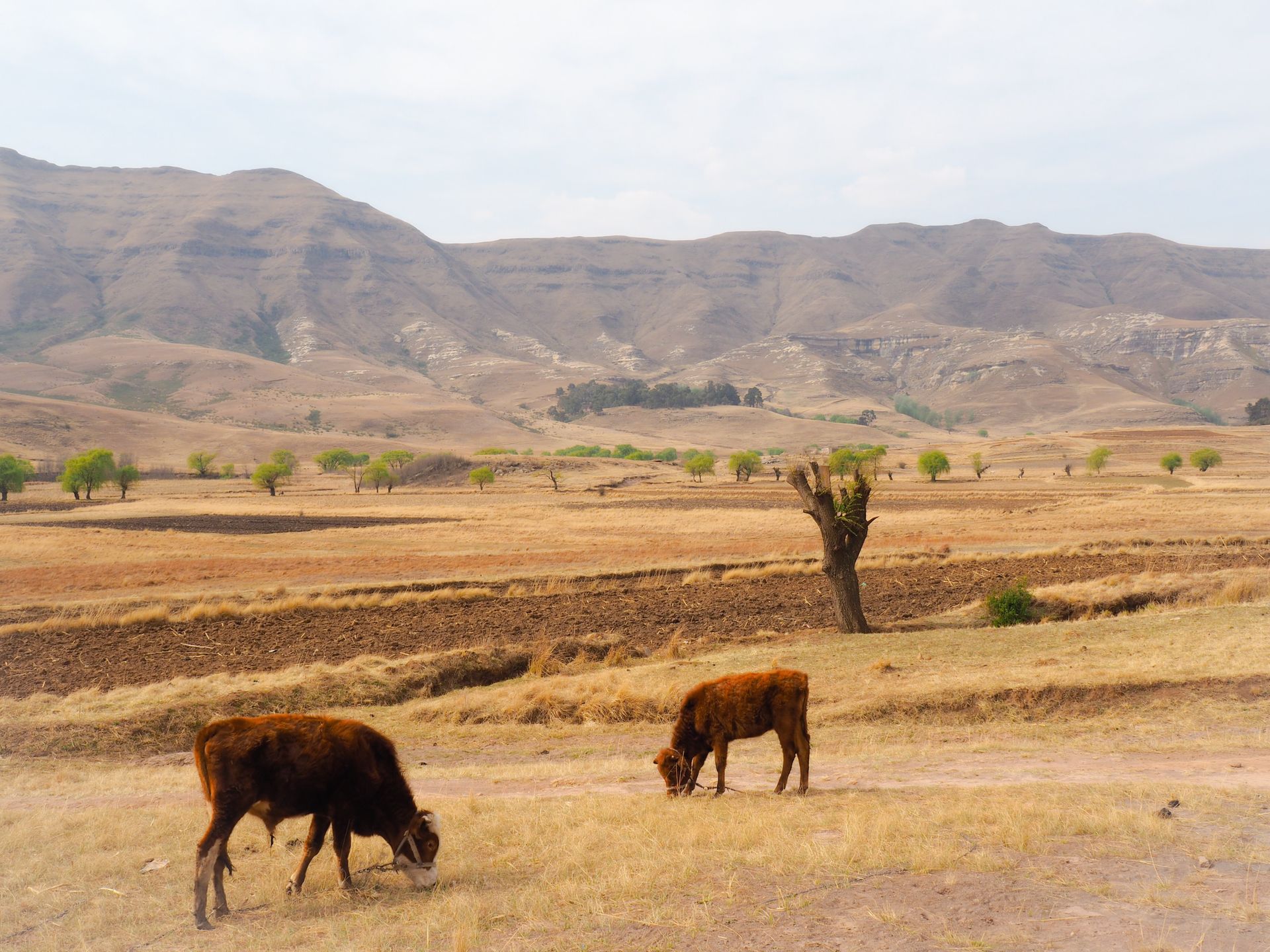
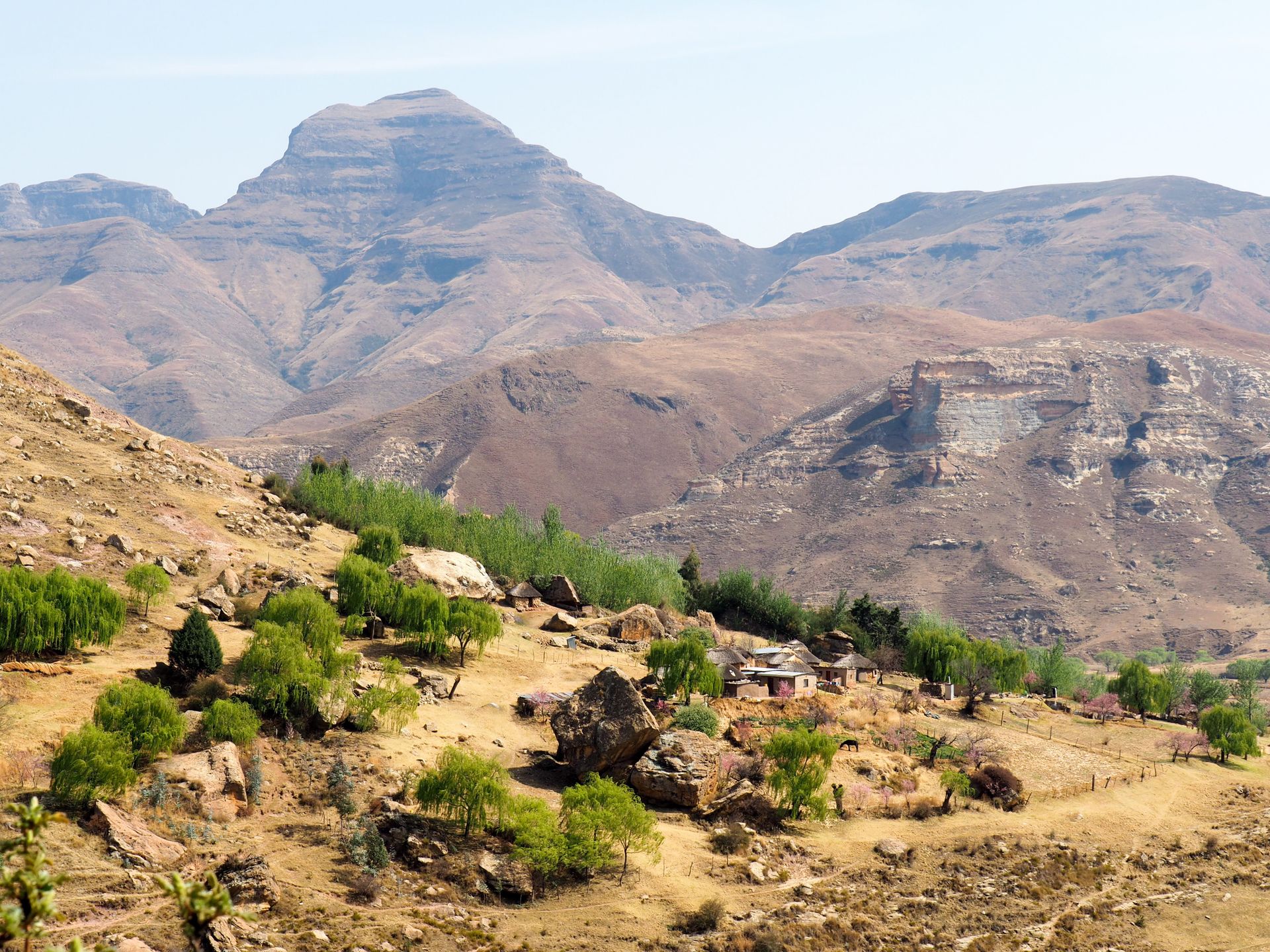
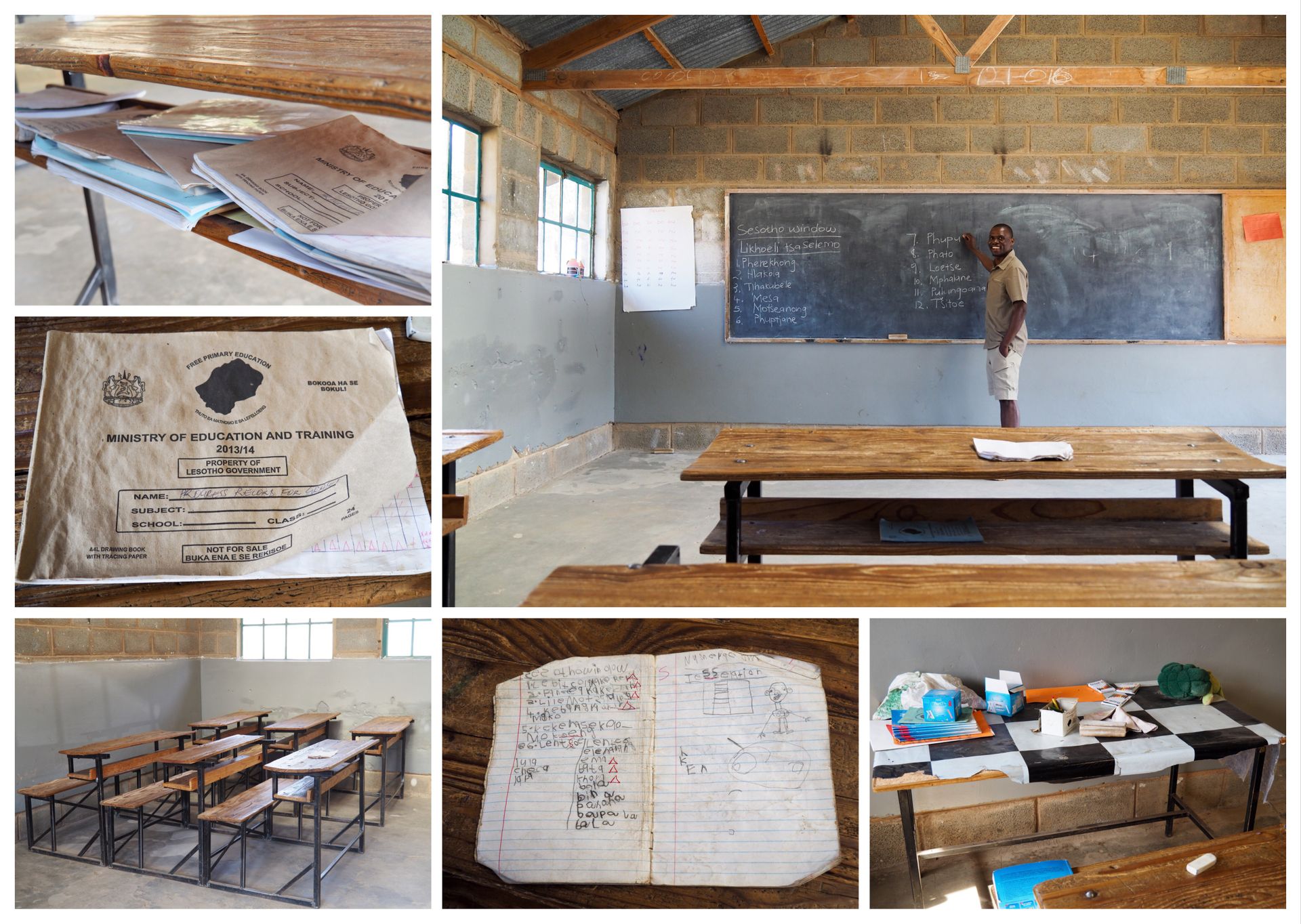
The principal explains that the primary school is free and attended by all children. He says the high school is beyond that hill; the principal points to a huge mountain. When we ask, it turns out that the students have to walk there, 2 hours there and 2 hours back, every day. Uuaaah! Nevertheless, for most of them, attending high school remains an unattainable dream because the visit costs a whopping 800 Lilangeni in school fees per quarter! That's unaffordable for almost all families.
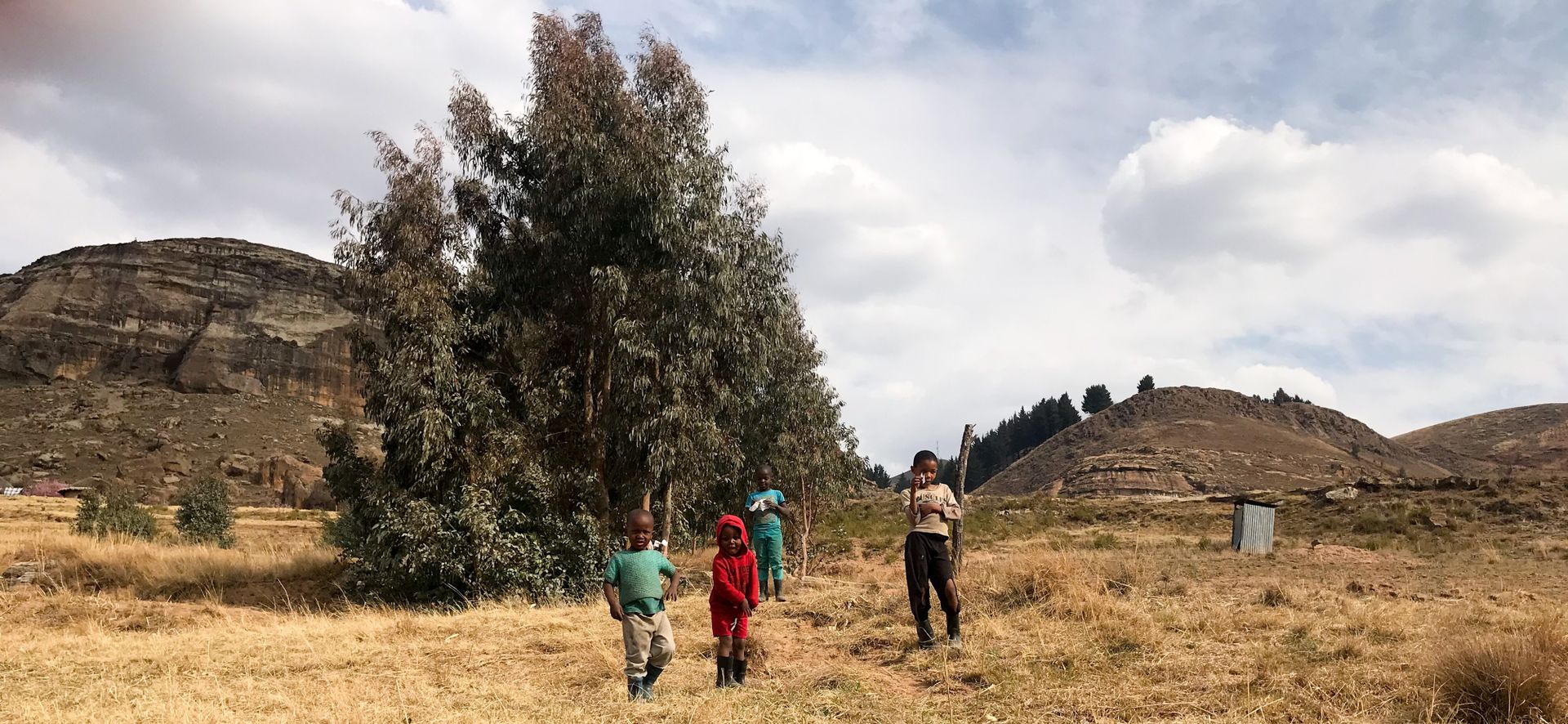
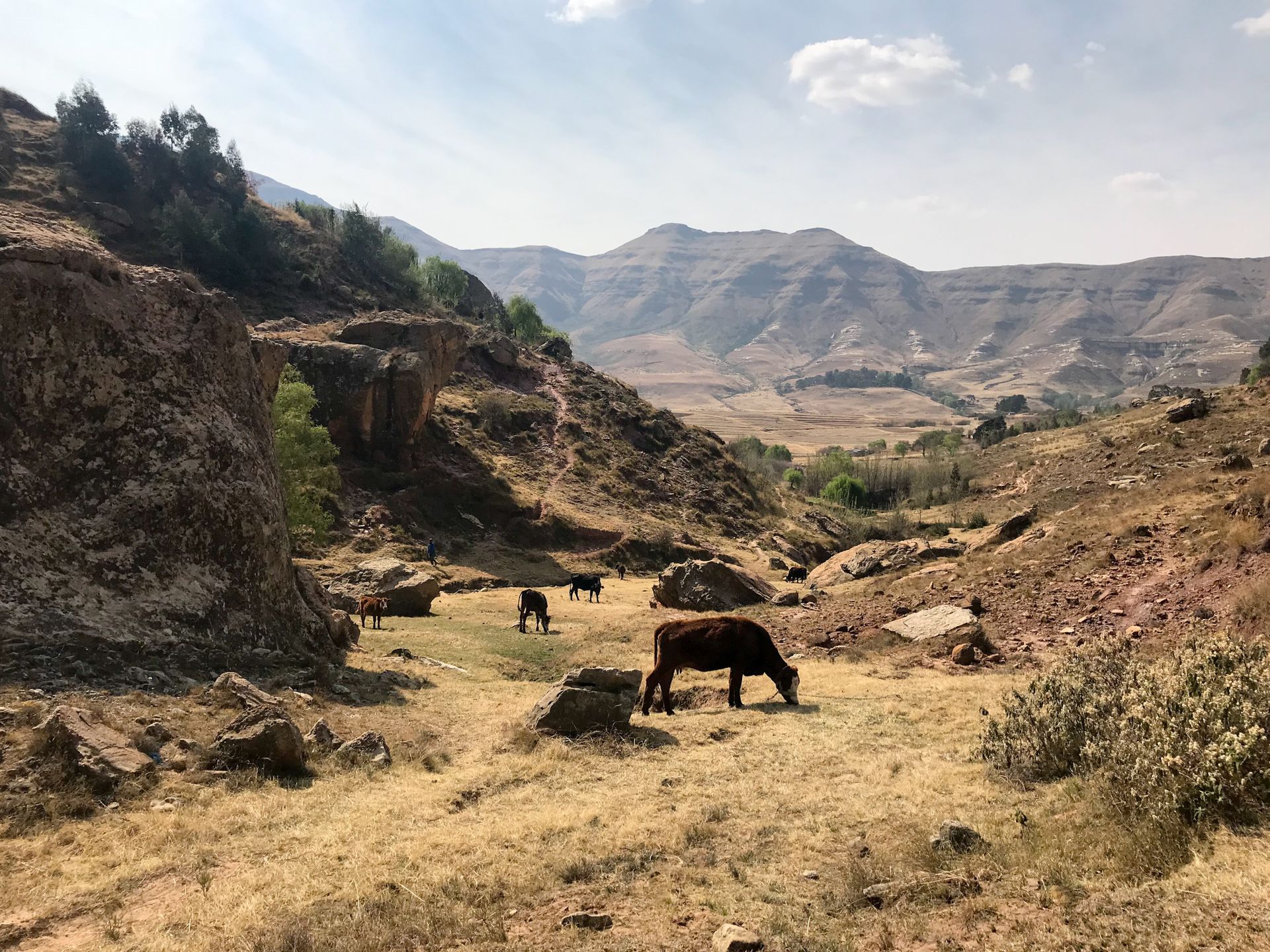
We leave the tour bus behind and start our hiking tour. Today we only have to cover "just" 11 km and 700 meters of altitude, so it's an easy walk for Africans and a challenge for my still slightly sore thighs. The hike is really great, the landscape is varied and really worth seeing. So beautiful and so peaceful. The tranquility is wonderful and so is the view. It would be even better, though, if I didn't have to constantly look at my feet and could enjoy the view more. Well, that's what training is for. Once again, all we can do is persevere. It can only get better after all. We have lunch with a view and watch the boys herding goats. Occasionally, riders wrapped in blankets pass by.
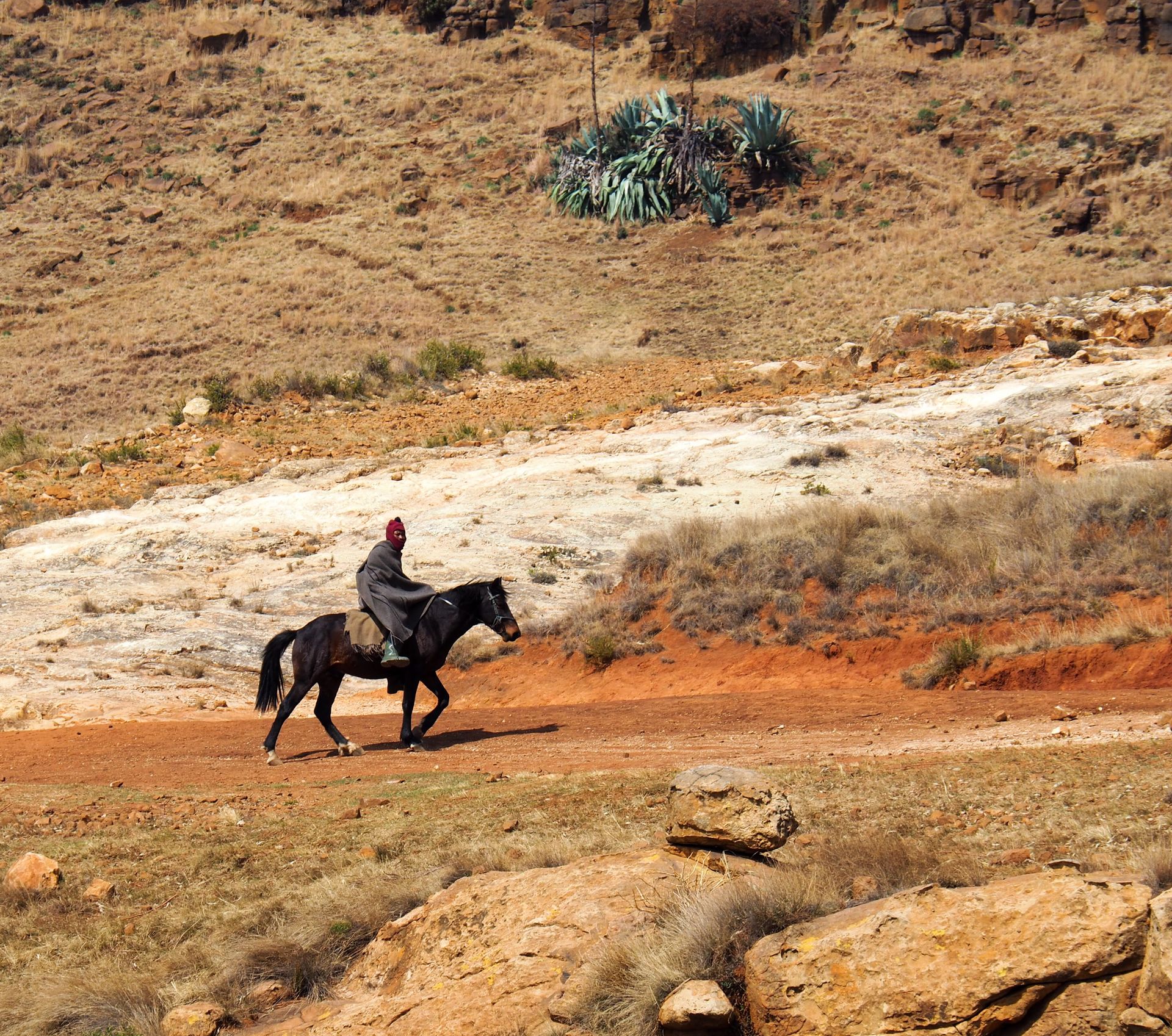
We continue hiking until we reach the highest point and take some pictures.
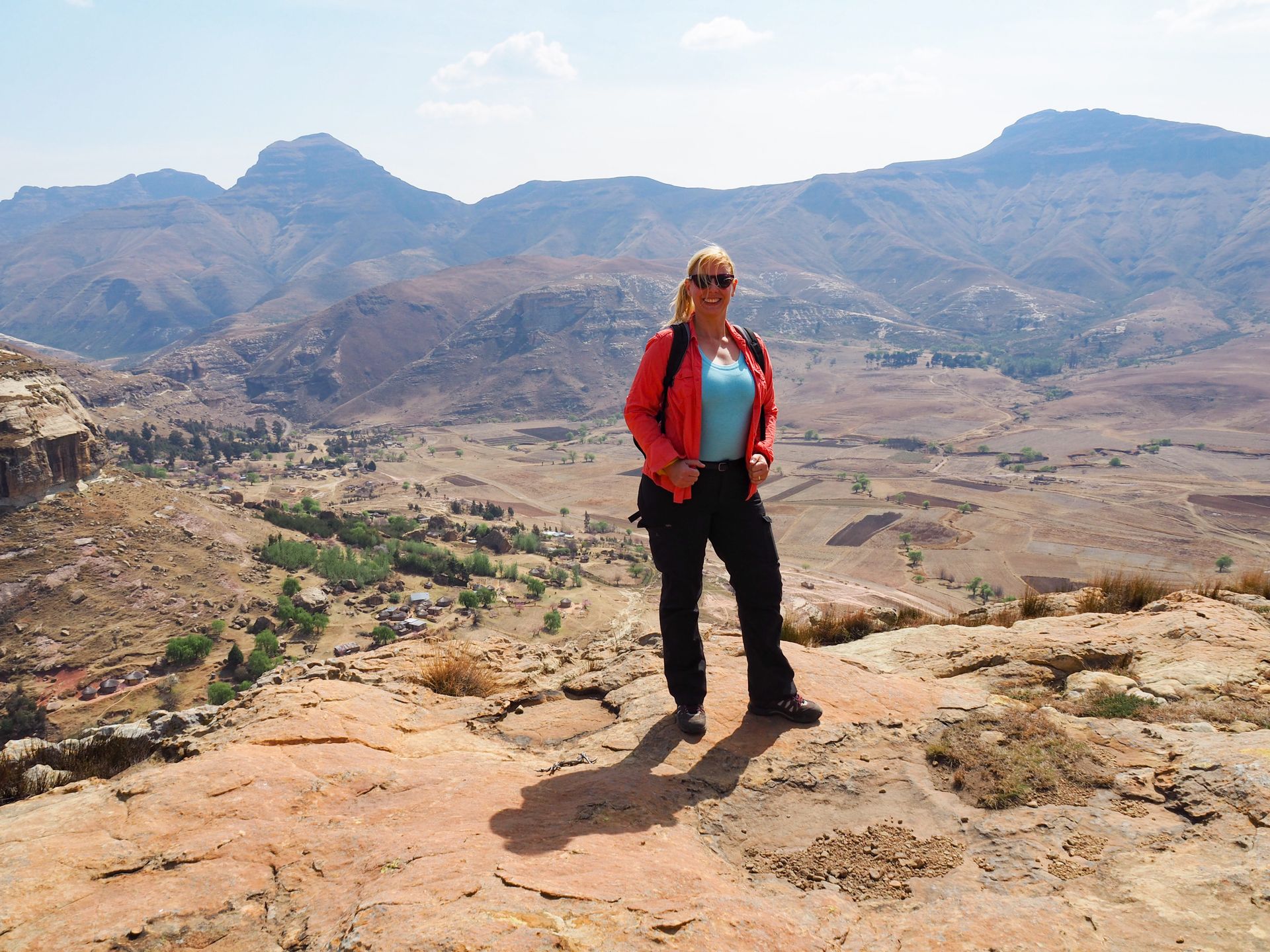
Then we go steeply downhill and crawl sideways like skiers down the rocky slope and steep grassy meadows.
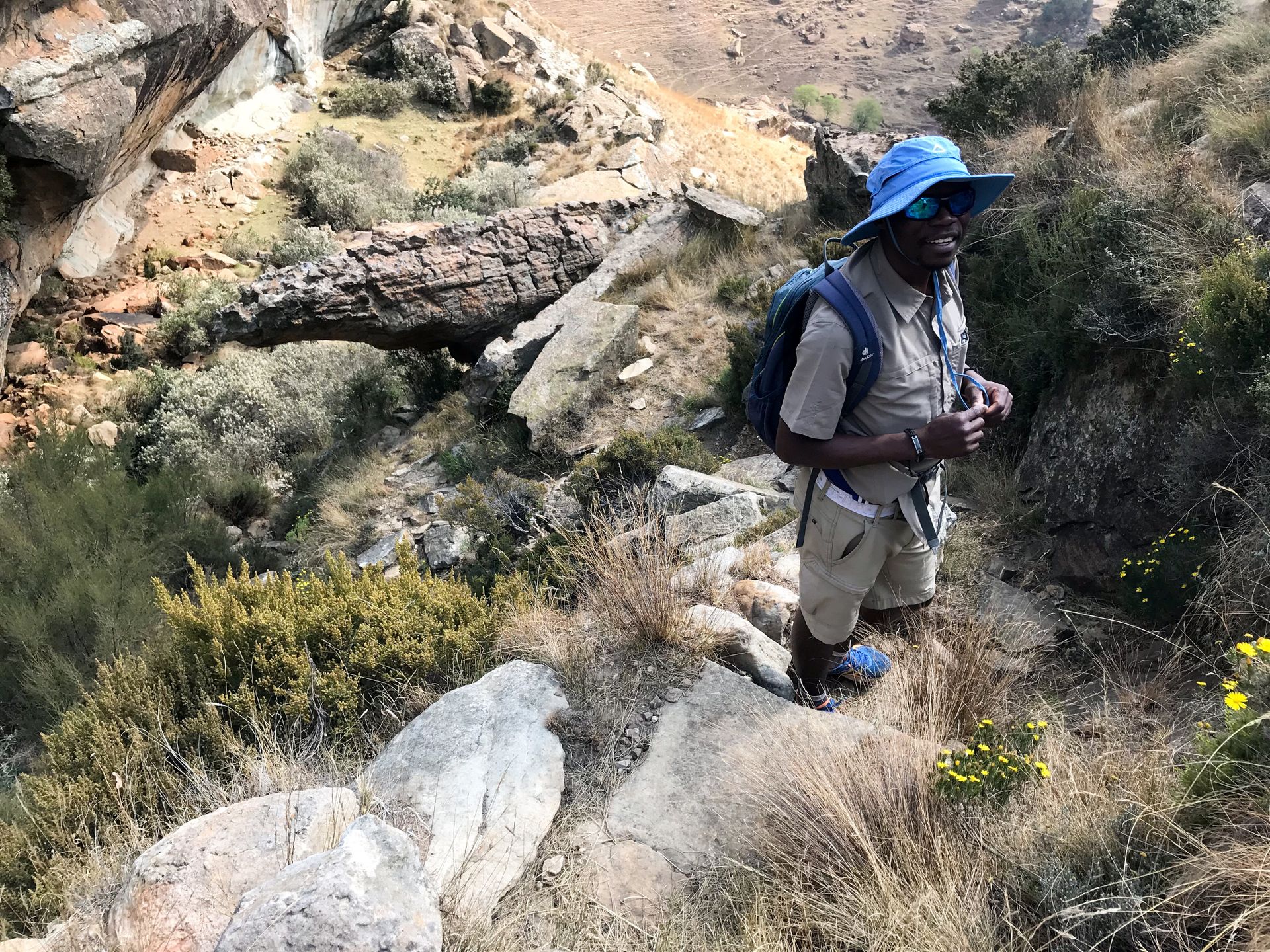
Our guide Searchmore introduces us to the history of Lesotho. He shows us ancient rock paintings and explains that they were painted with animal blood and what they mean.
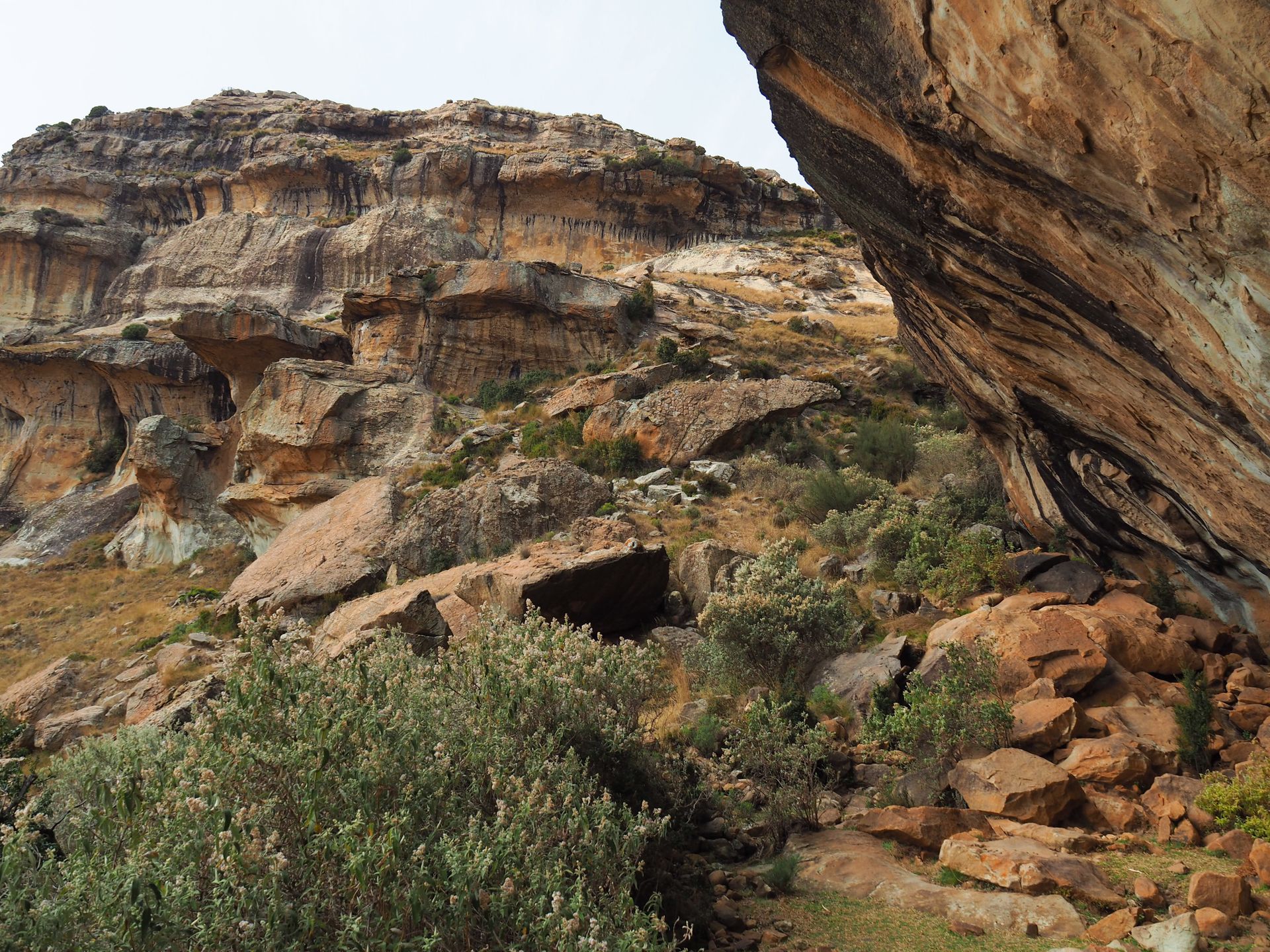
With his "Let's roll!" we head to the final stage. Quite exhausted, we reach the three small roundhouses.
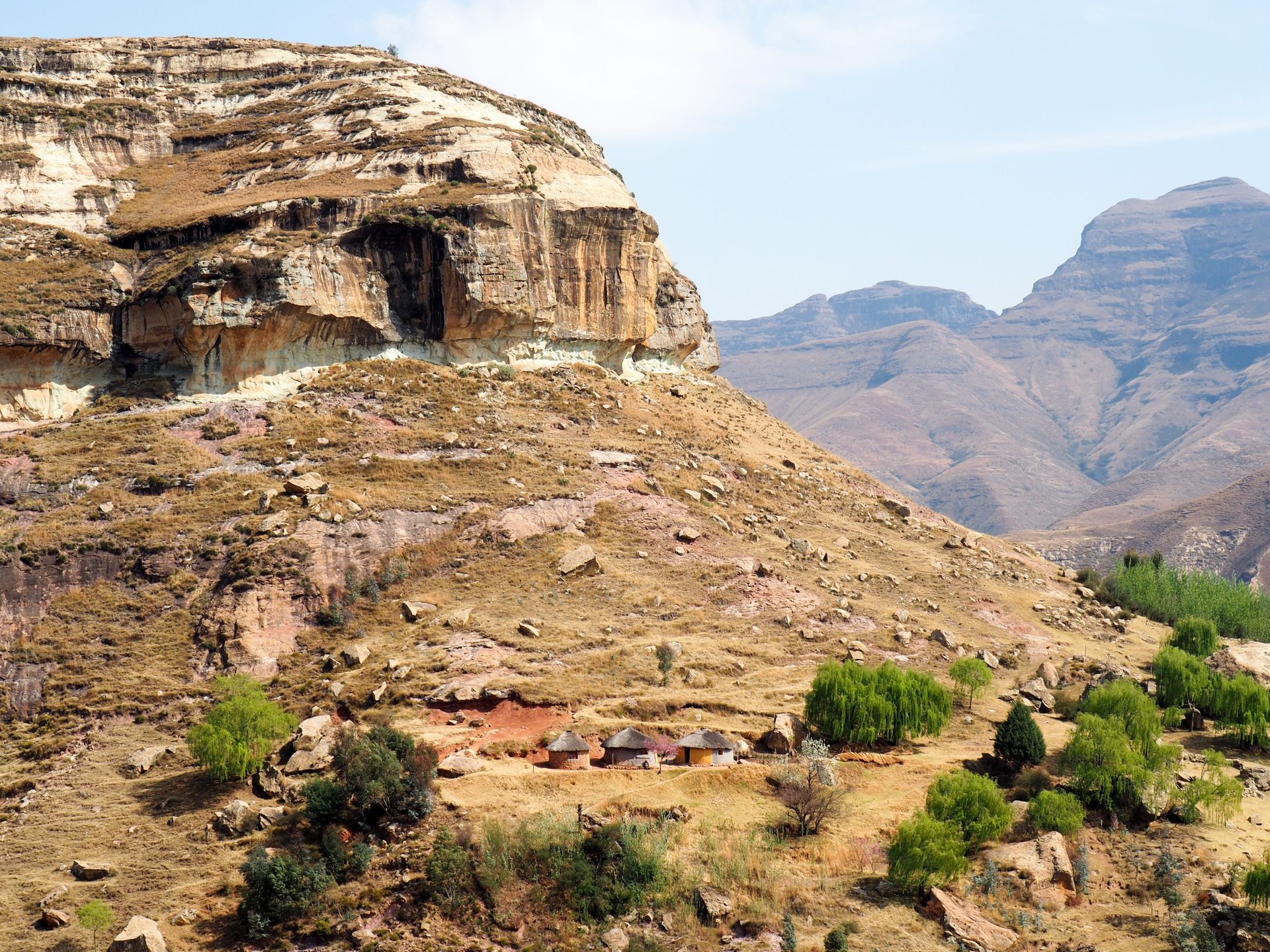
There we are served typical local food. The grandmother of the house puts a plate of pap and greens in the middle, and everyone eats from it. With the right hand, you pick a piece of pap, shape it into a mini flatbread, and use it to grab the greens, then let the combination disappear in your mouth. Pap is a white maize porridge that is eaten with every meal and really doesn't taste like anything. But it fills you up, is cheap, and available.
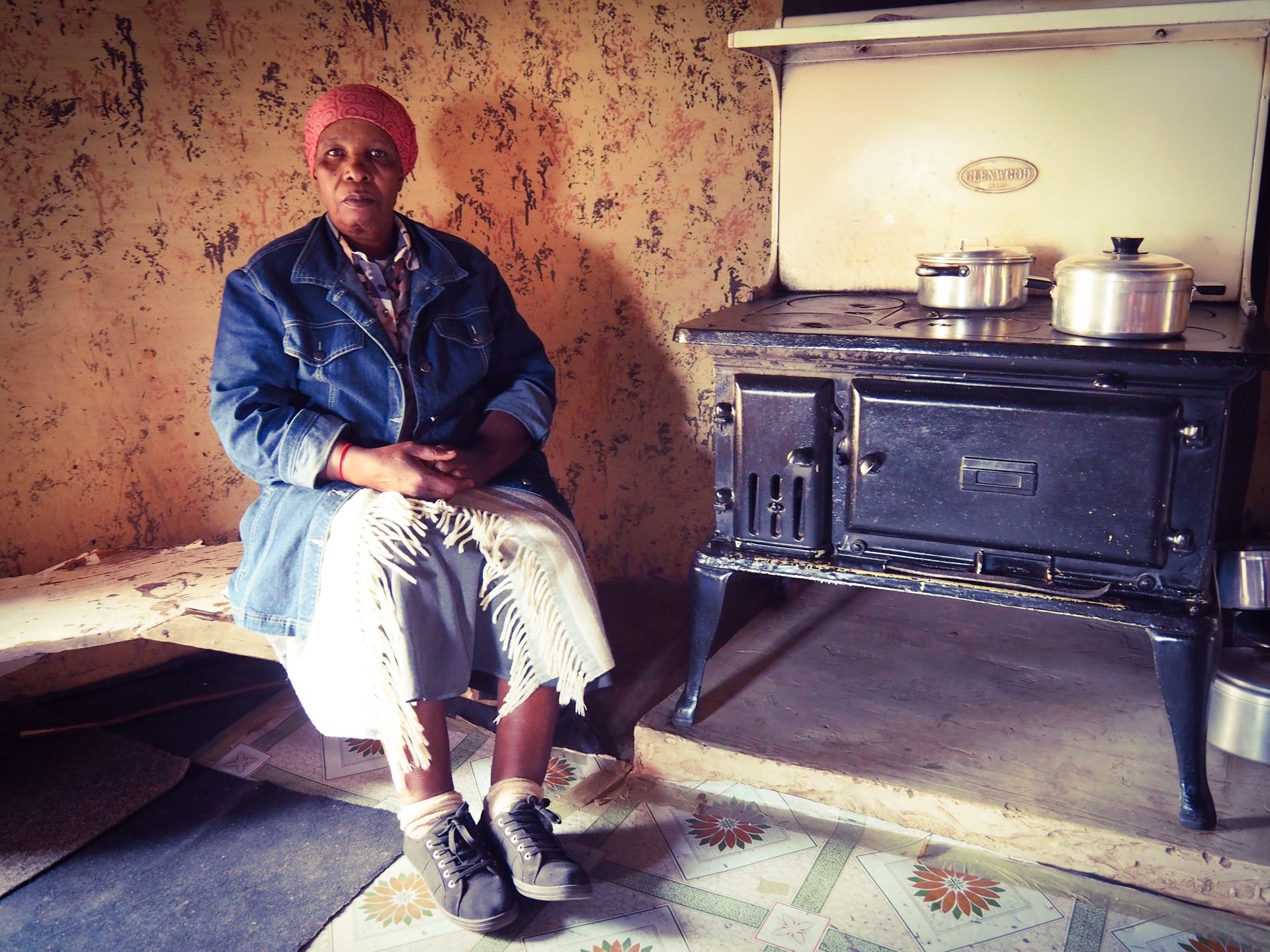
Finally, we are introduced to the village healer. In full healer attire with appropriate robes and bells, he tells us the story of his calling. The school principal translates and we are allowed to ask questions. As we all discover later, none of us find the story very credible, so this part of the otherwise beautiful tour is very short. Satisfied, we get on the bus and shake our way back to the border. It's a shame that the day is already over. I would have liked to stay longer.
The travel guide says that Lesotho is an underestimated travel destination. Despite the poverty, I can only agree.
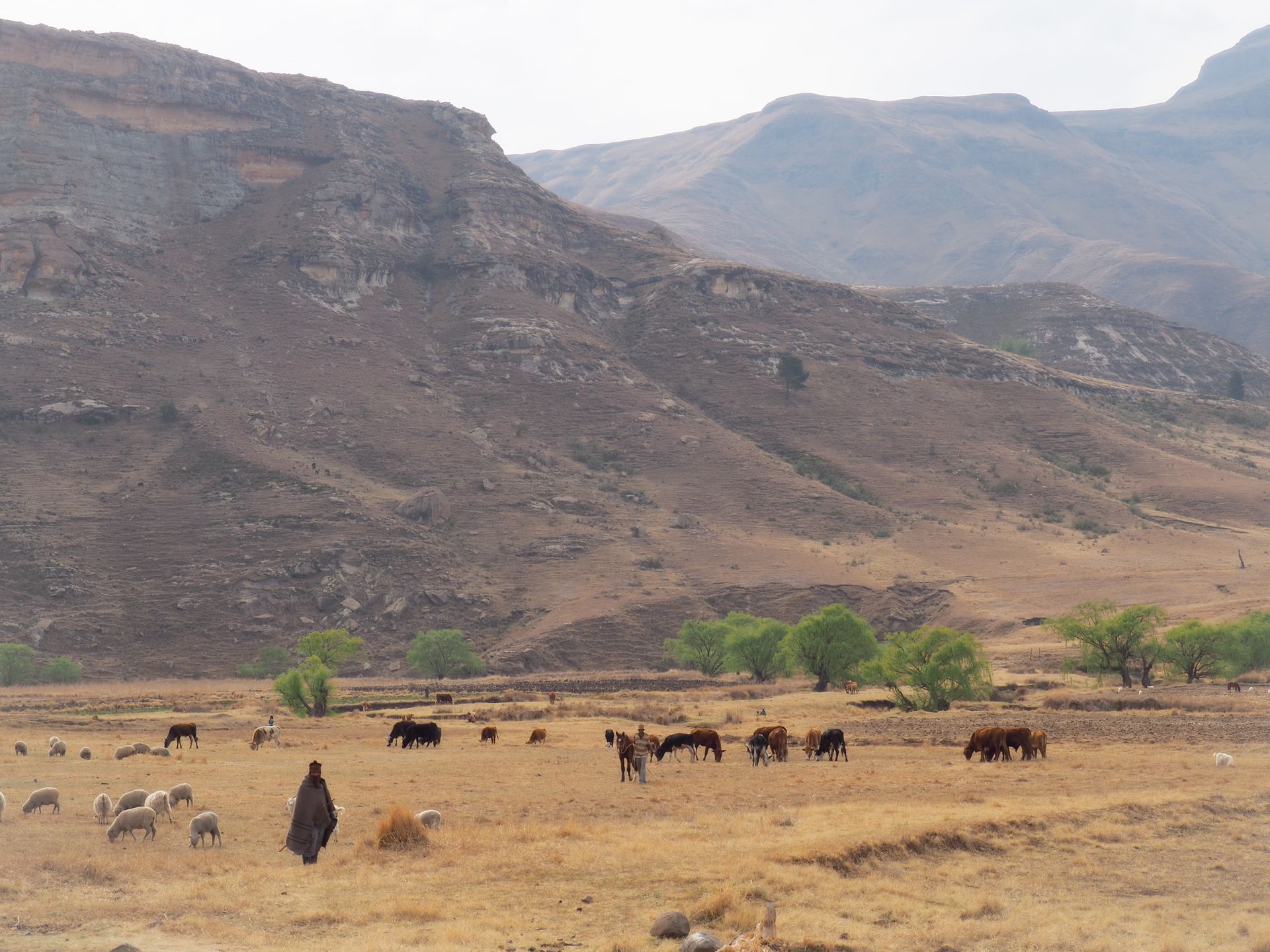
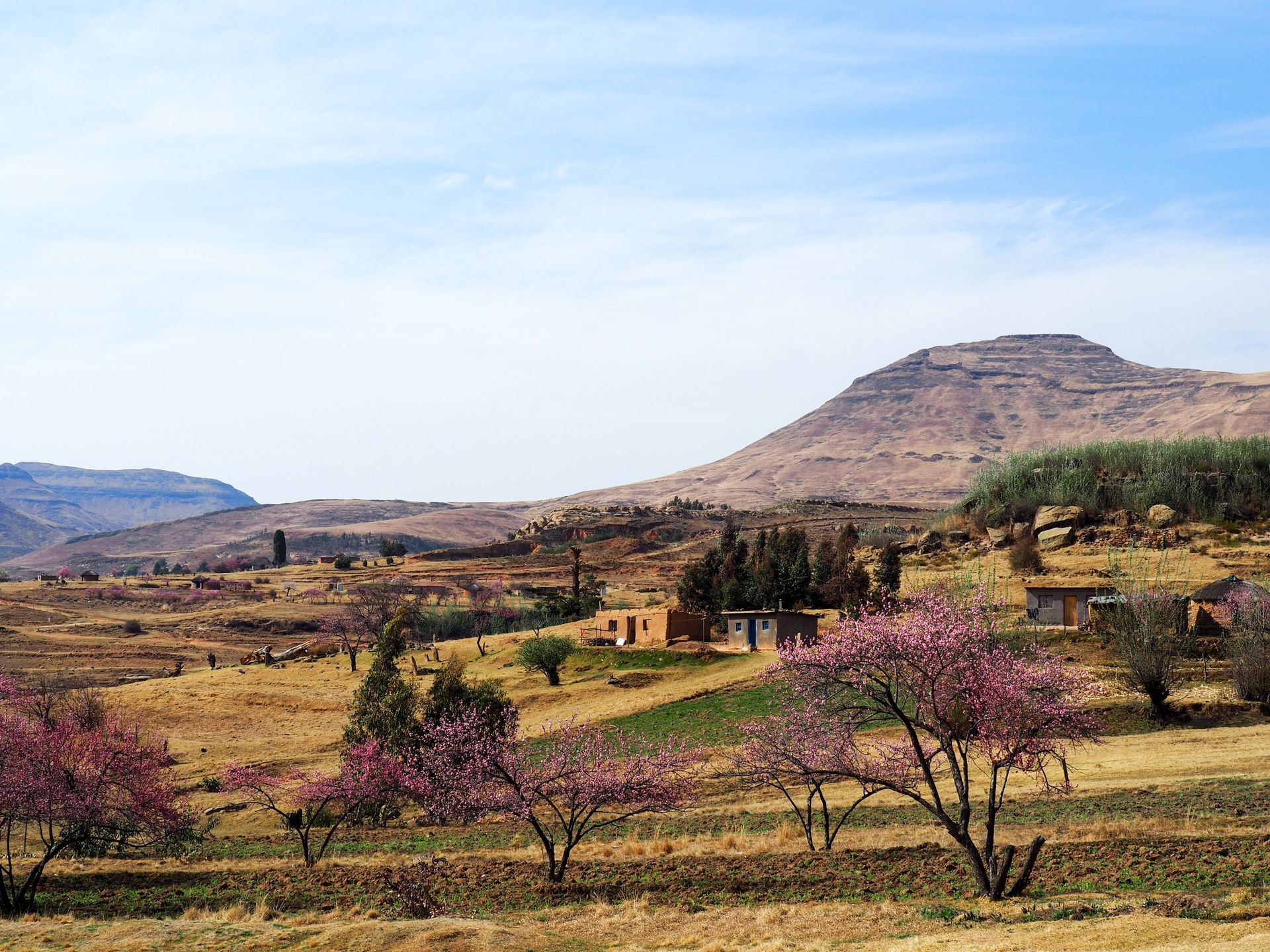
نيوز ليٽر جي رڪنيت حاصل ڪريو
جواب
